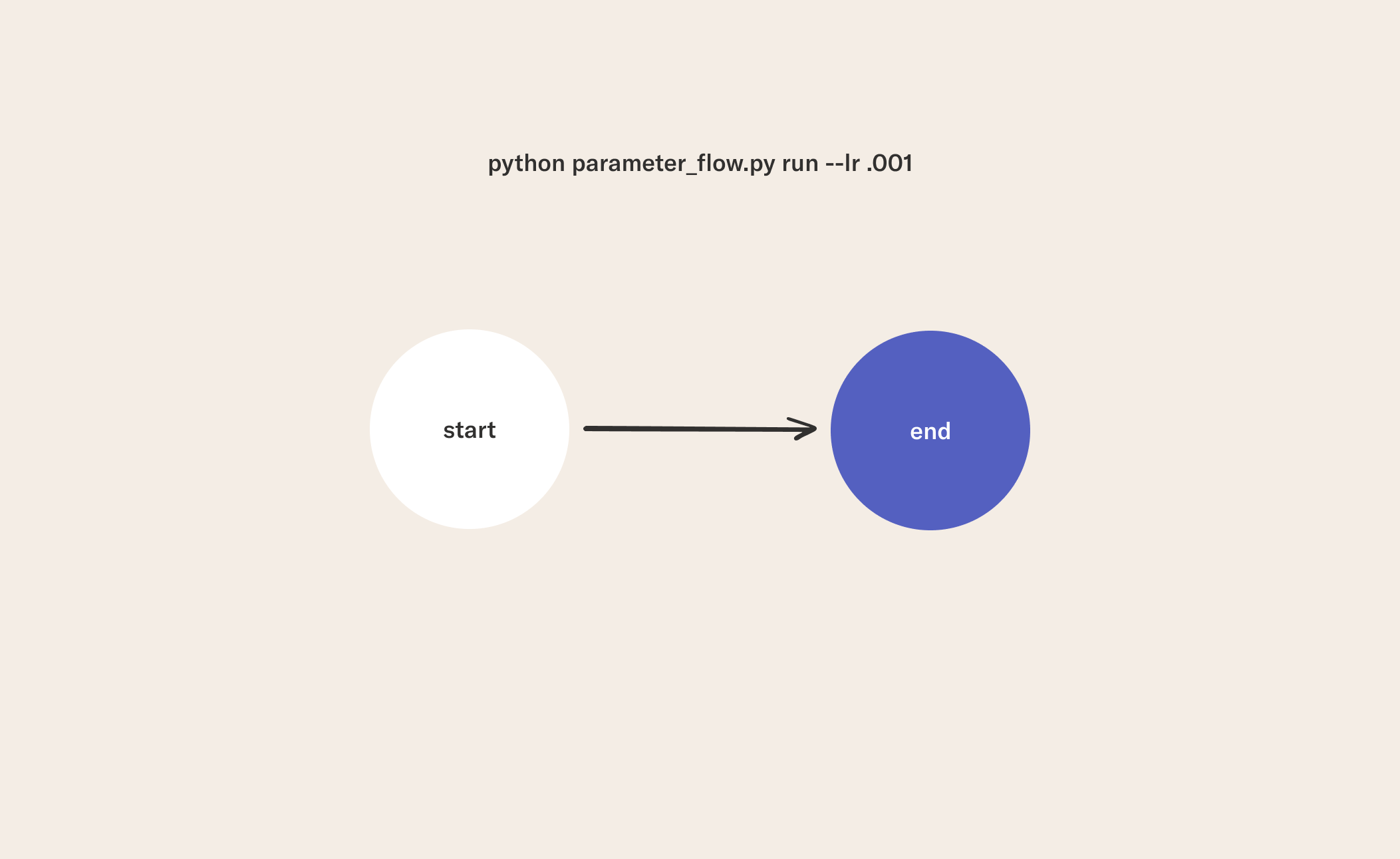Flow Parameters
1Why Parameters?
Sometimes you need to pass a value to a flow at runtime. For example, in a machine learning system with automated aspects, you may not know how to select an input to the model training flow, such as a hyperparameter search space, until it is time to run the flow.
To address these cases you can pass values to a metaflow.Parameter in your flow. When you write a flow you can define which parameters the flow will take. Then you can pass corresponding values to the command that runs your flow:
python <FLOW SCRIPT> run --<PARAM NAME> <PARAM VALUE>
2Write a Flow with Parameters
Using parameters is a convenient way to quickly iterate in prototyping. For example, you might want to change a hyperparameter like a model's learning rate. This flow adds a parameter called learning_rate to the MinimumFlow example from episode 1.

from metaflow import FlowSpec, step, Parameter
class ParameterizedFlow(FlowSpec):
learning_rate = Parameter('lr', default=.01)
@step
def start(self):
self.next(self.end)
@step
def end(self):
print("Learning rate value is {}".format(self.learning_rate))
if __name__ == "__main__":
ParameterizedFlow()
3Run the Flow
You can run the flow using the generic command and the default value will be used:
python parameter_flow.py run
Or you can pass in the parameter's value at run time:
python parameter_flow.py run --lr .001
Congratulations on finishing the first season of the tutorial!
In this season you have seen:
- In Metaflow, a flow defines the structure of your code.
- You can create flows by wrapping a
FlowSpecobject in a python script. - Flows can store data using the
selfkeyword. These objects are referred to as artifacts. - Flow data can be accessed from previous steps, or after the flow using the client API.
- You can pass values to your flows at run time using parameters.
In the next season, you will see how to apply many of these concepts in machine learning workflows.